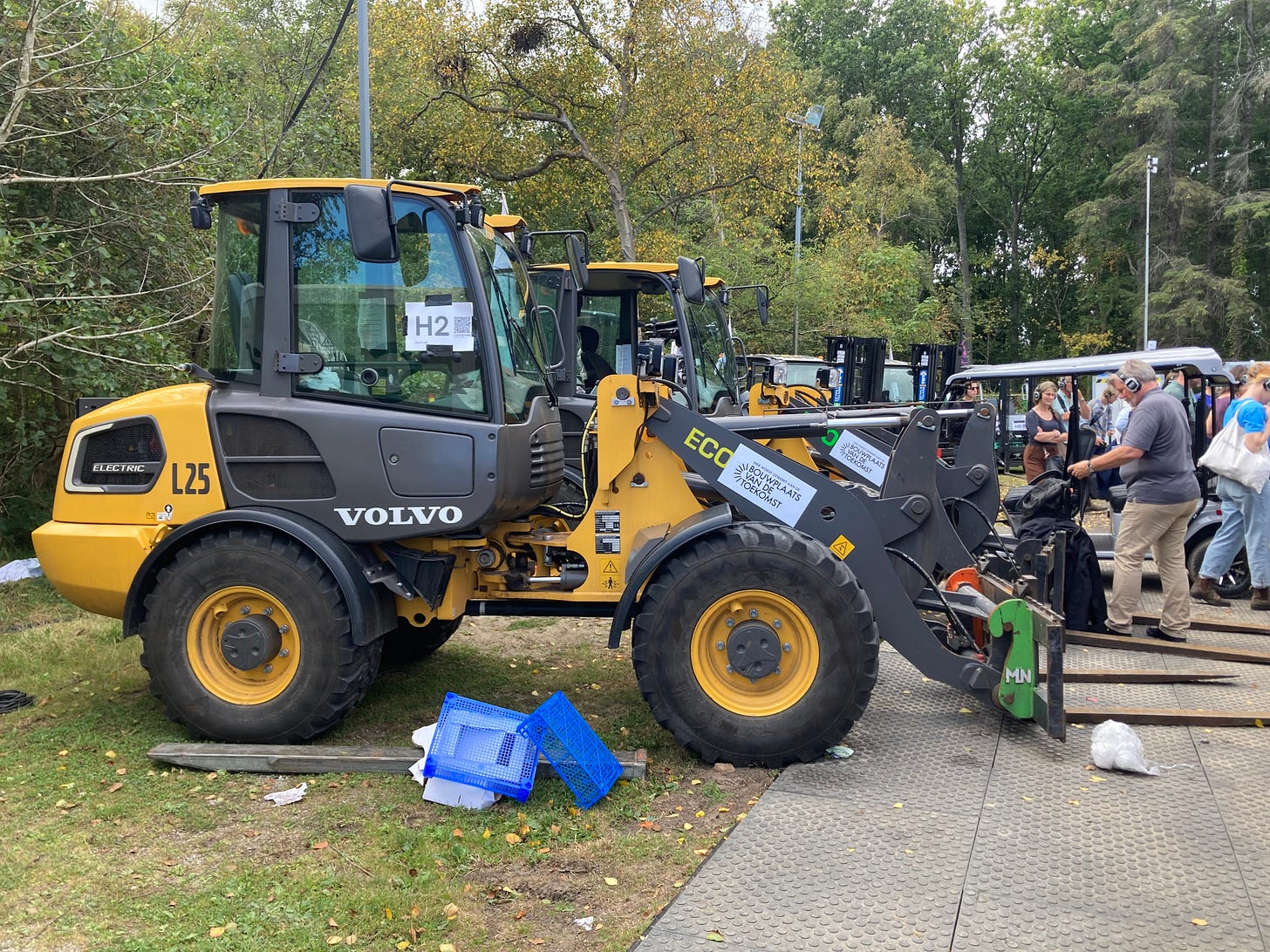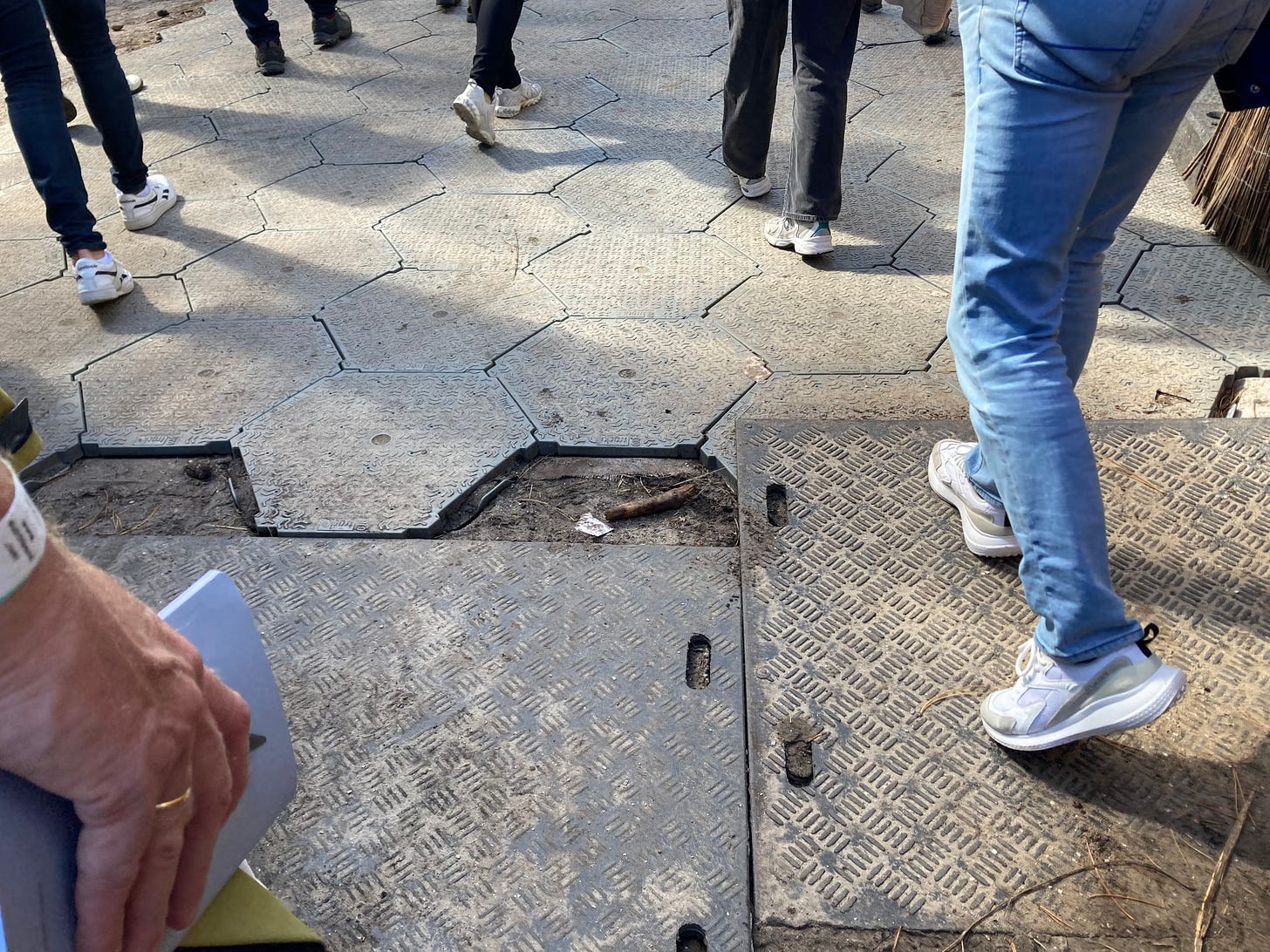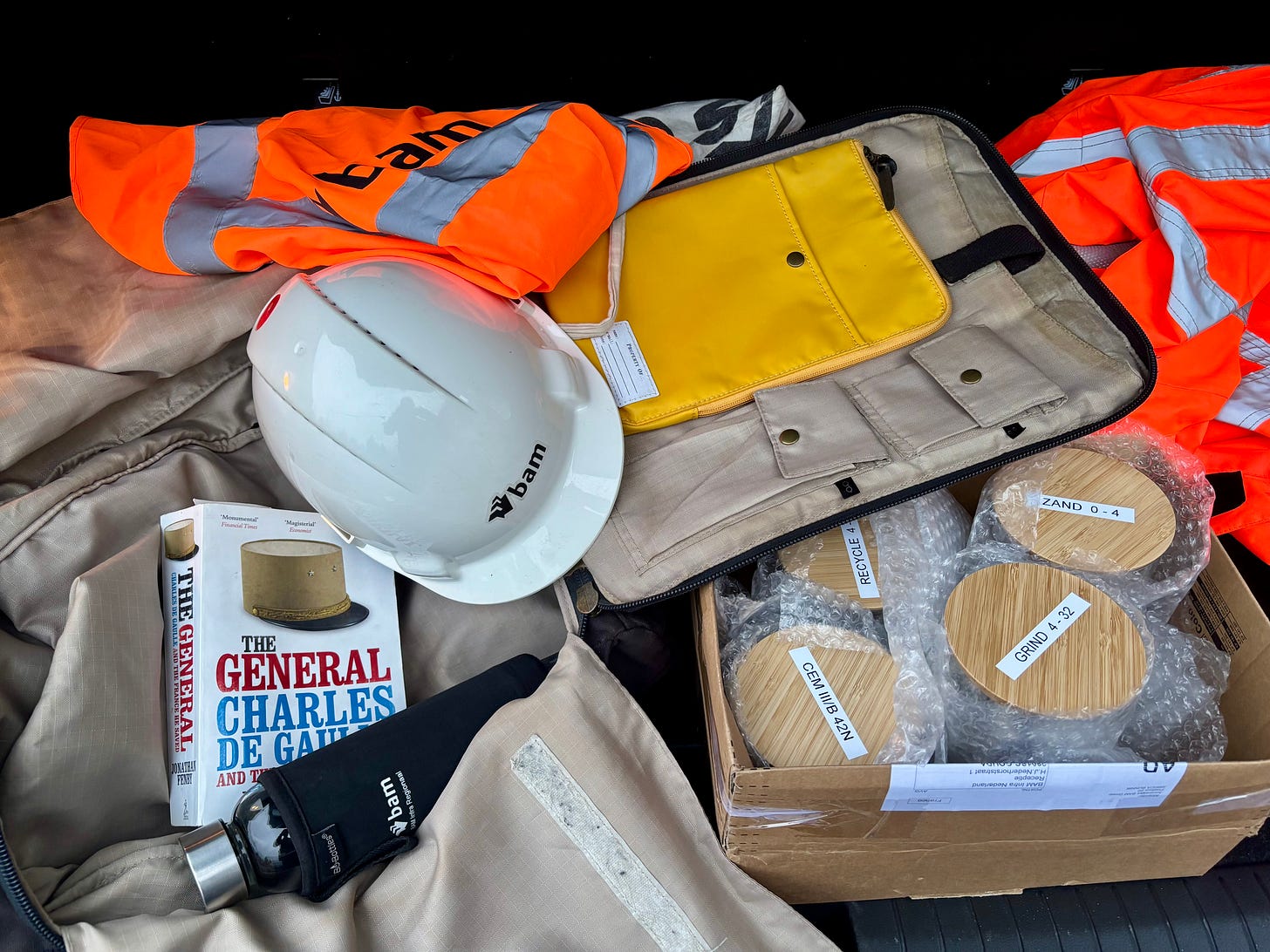#121 Better festivals… and better construction sites
Like the proverbial carpenter who sees a nail in every problem, whenever there’s a challenge I look for a network to fix it. And just as every carpenter has a favourite hammer, I like my networks dynamic, inclusive, and creative. No doubt, an experienced carpenter can bore you for hours with hammer anecdotes; I can do the same with stories about how networks save the earth. Sorry, not sorry.
Last Sunday on Vlieland, at Into The Great Wide Open, I walked past the rapper above. My backpack contained ten kilos of concrete mix, a hi-vis vest, a helmet, and a biography of Charles de Gaulle, the most punk packing I ever did for a day out. Tempted as I was to join the moshpit, networking called. While shortstraw. lit up the crowd and I felt the most punk I’ve felt in years, I walked on towards a networking event mixing construction, festivals, and sustainability peeps.
For years, ITGWO has led the way on festival sustainability: almost zero-waste, climate neutral (all scopes), and recognised as a best practice in the Dutch Council for Culture’s Cultuur Natuurlijk report we wrote a few years back. They put it best:
“Sustainability can sometimes be frustrating, but more often it is a major source of renewal and improvement. By being a frontrunner, we develop an extra drive to keep reinventing ourselves. As a result, the best people in the sector and forward-looking partners are eager to collaborate with ITGWO.”
This year, BAM joined that group of forward-looking partners. Together with Lab Vlieland, TBI, and others, we’re imagining climate neutral, circular and biobased construction sites and festivals. Because festivals and construction sites have more in common than you’d think. Both are temporary. Both require massive energy and logistics. Both leave a lasting footprint. One leaves behind music memories; the other leaves housing, energy systems, and hospitals. Both can and must become more sustainable.
Here’s the punk track listing of how we’re about to do this:
Diesel is so last decade
The hum of diesel generators is still the soundtrack to most festivals and building sites. At ITGWO, they stood idle. Ten thousand people, all bands and catering, powered by batteries, smart grids, and hydrogen. Not a drop of biodiesel needed. We know it works; we’ve operated dozens of zero emission (ZE) construction sites already. Now, we’re scaling up, which brings its own challenges. Such as a complete reimagining of how we think about electricity: local, sustainable, finite.
Heavy metal, zero emission
From bands backstage to beer for the crowd, festivals move a lot of things around. As do construction sites. At ITGWO, everything arrived ZE (obviously). Heavy plates for the festival floor were ferried over hundreds of kilometres without burning a drop of dinosaur juice. There’s a lot to learn about ZE logistics, as anyone driving an EV can confirm, but it’s hard to defend the need for fossil engines (on land). If you still want to burn fossils, you’ll soon need to plan carefully, ZE machines are becoming the norm.
The secret life of geotextiles
Temporary sites are material hogs: fences, roads, flooring, scaffolding. Traditionally, these mean plastics, steel, concrete: high-impact, polluting materials. There is a simple fix: more circular, more biobased materials that reuse and reduce impact, and sometimes even remove carbon from the atmosphere. We piloted just such materials on Vlieland. For instance, biobased geotextiles.
A geotextile separates layers of materials in the ground. We use it for temporary roads to ensure sand and asphalt don’t mix with the soil. Festivals use it to protect the parks and fields they transform into their temporary venue. Traditionally, geotextiles are made of fossil-based materials, which is undesirable because of climate impact and microplastics. Together with Joosten Group, BAM has developed a biobased alternative made of wood fibres. An added benefit of the material may be that after use, it can be left in the ground to enrich the soil, saving energy for removal of the typically single-use product.
Punk in safety gear
At the end of the day, at the networking, ideas and needs flowed as freely as the music. Suppliers, clients, and festival organisers all sharing, scheming, and dreaming. And then we danced. We were at a festival after all.
Secretly, that’s my dream: to merge the joy and openness of festivals with the scale and permanence of construction. So that a construction site isn’t just tolerated as a noisy, messy in-between stage towards your dream home or green neighbourhood. But celebrated as a place where the air gets cleaner, the soil healthier, and communities gather, as if for a festival, to witness progress.
I honestly believe that if we really commit, that future is closer than we think. Maybe only a few years away. This demands a revolution. But we’re all punks, so let’s turn up the amps!
— Jasper



